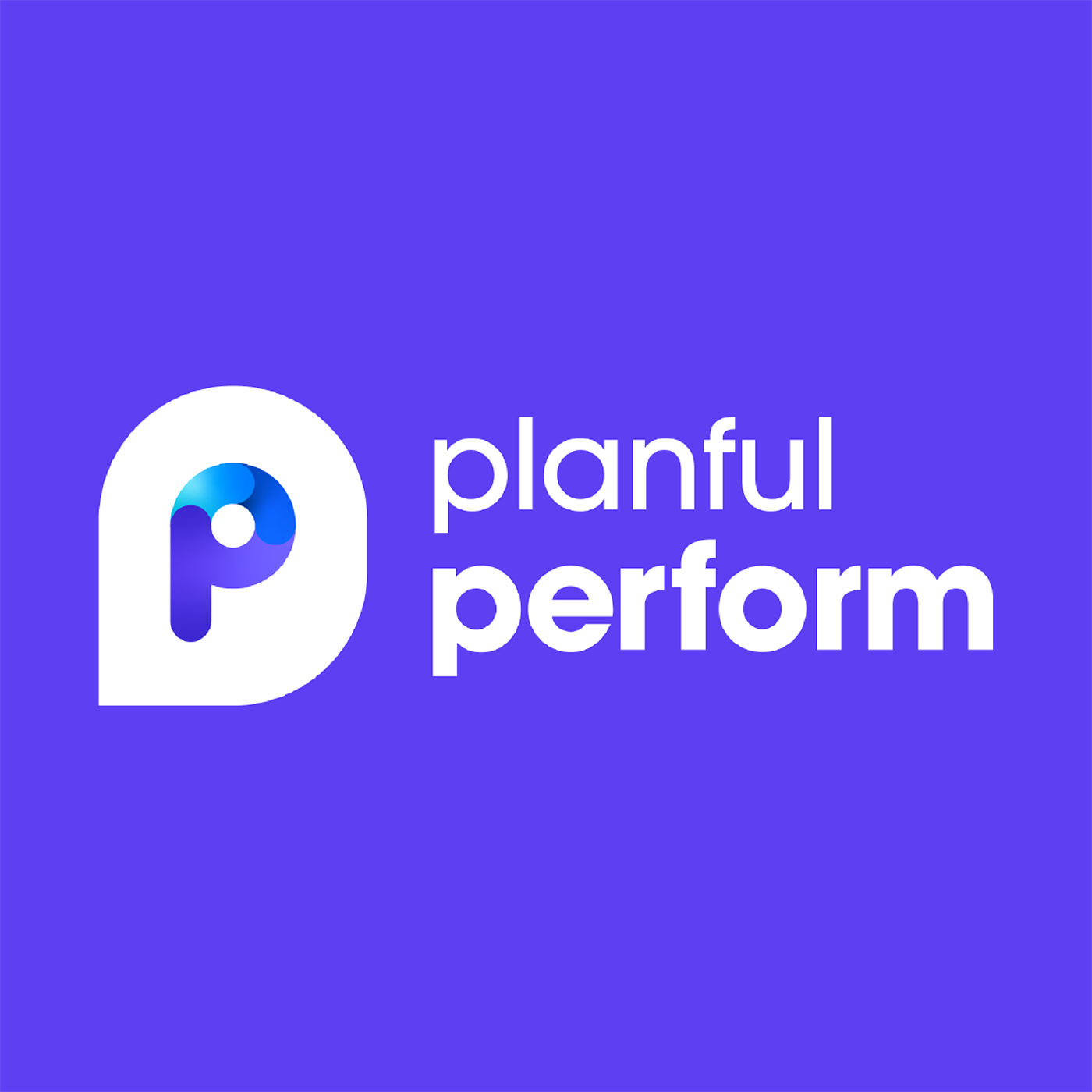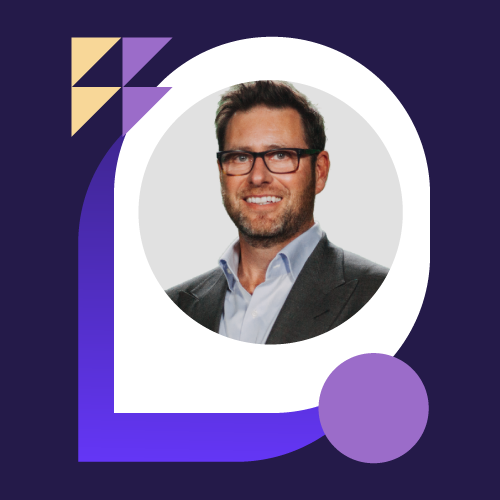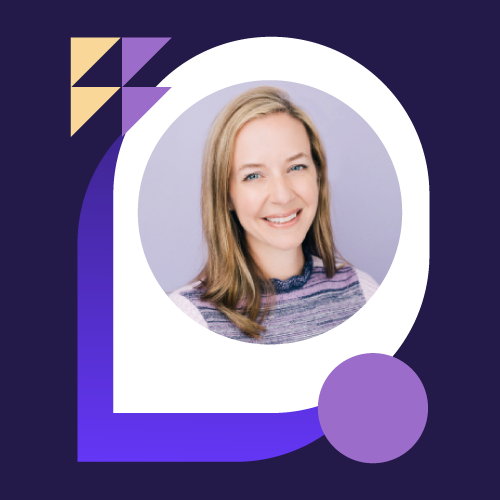Supercharging Finance With xP&A and Dynamic Planning with Andrew Von Eschen
- 0.5
- 1
- 1.25
- 1.5
- 1.75
- 2
Andrew Von Eschen: Thanks so much, Cam. And welcome, everyone, to my session entitled Supercharged Finance with XP& A. I'm your host for today's session. My name is Andrew Von Eschen. Little background on me, not going to spend too much time kind of covering this. But my role at Planful is to engage with prospective and existing customers alike to understand core challenges and requirements and ensure that the Planful application can deliver ultimate success. For today's session, we'll talk a little bit about why XP& A and why now, how we can accelerate your XP& A journey, and then we'll see a live product demonstration helping you identify different potential use cases that you can use the Planful Platform for. When we think about planning and forecasting, it's oftentimes reserved for a function of finance. When we want to engage with those respective end users across the organization, they typically view that ask as a task that takes them away from their daily activities. But the reality is, planning and forecasting occurs in every silo and every corner of the business. These teams rely on mission critical metrics to track the overall performance of their daily jobs that they need to perform to help business move accurately and smoothly forward. These operational models and their outputs are oftentimes emailed across the organization where they're manually aggregated and integrated into larger planning processes. This is oftentimes extremely error prone and very tedious in nature. It's effectively non- value- added work. Our goal at Planful is to engage with those business users in a more effective and frictionless manner. We want to enable those individuals to provide the inputs, the analysis and the review of the information to effectively up level the financial IQ of the entire organization. Providing more information in a meaningful way, we enable the business users to make decisions faster. This is even more important when you consider that 70% of new finance projects will extend into these additional core areas. Our job and our goal is to help you accelerate that process now. For today's session, you're going to see me walk through a live product demonstration, where I'll take the reins as a typical end user to the Planful Platform. We'll simply cover a very typical subscription- based revenue model, where we can see that automated connectivity to our relevant source systems, enabling us to effectively leverage additional data sets that help us provide more of those operational metrics. We'll see how we can wrap process control and governance around the entire process, ensuring delegation of different activities to relevant users, as well as walk through the completion of those items. And then as we make the changes throughout the process, we'll see how it's all interconnected. I make an update here, it reflects there. I can then report, consume and analyze all of the mission critical information. So with that, let's actually get into the application itself. Awesome. So welcome to Planful. For many of you, this might look very familiar. For some of you, this might be brand new. But Planful is a cloud- based application that enables you to communicate a very effective experience across the user community. We have full security control governance wrapped around the platform, ensuring that those particular end users that need to engage with the application are simply interacting with the relevant parts and pieces and data sets that are applicable to them. Now, as I look at my view of the world here, I can simply see the core parts of the Planful application that I'm effectively allowed to interact with, whether it be my dashboards, my tasks, or even some of my planning and forecasting templates. I can also see here that I'm just choosing to start my journey today in more of this dashboard based view, because it gives me a nice holistic representation of a number of both financial, as well as non- financial and operational data points. I can see here a number of metrics that are pertinent to me as we're thinking about some of our revenue planning activities, things like customer acquisition costs, LTV, looking at different waterfalls of products being sold, or our churn rates on a more regular basis. The idea here is we're enabling you in the platform to bring together not only that financial information from a general ledger based system, but also any of the additional ancillary data sets that you may have in system like salesforce. com, Marketo, even in associated data warehouse. The key component here is we're accelerating that information into the application and enabling you to just now ask more intelligent questions. If I, as an individual, wanted to drill a little bit deeper into one of my particular product lines, it's a seamless experience to navigate down to that next level of support. I can also toggle through any of these objects to simply look at the information in a different manner. If you want to see the movement across my bookings, my churn, my total from one quarter to the next, based upon the selection that I'm making, the application reaches in and returns back that relevant set of results. Now, when we typically think about an organization and how we work through our different planning, forecasting activities, whether it be finance- based or more operational in nature, there's typically a set of tasks that get assigned out to relevant users. Generally speaking, the way in which we communicate that information through a system like Planful is through emails. What if we didn't have to do that? In Planful, we can leverage what we call task manager as a framework to wrap that process control and governance around what we need to do as individual users. I can see for my end user here, the associated tasks and activities that I need to work through. It might be to analyze some of those business KPIs. I might be reviewing some of the things that you heard my colleagues talking about earlier today. Those predictive signals that are identifying information that I need to dig deeper into. I may have to update my revenue forecast and finally consume some relevant revenue reports. The key idea here is we're simply providing additional accountability, additional controls around what people need to do and how they need to do it as they're engaging and interacting through these different activities. Once I've completed an item, I can move it to complete. It sends automated notifications out across the organization, enabling for that seamless communication throughout the business. Gone are the days of having to Slack message my teammates to inform them that, hey, I've completed this task, or sending emails to inform people that, hey, I've now completed X. Planful will handle all that for me. This is also a launch point across the platform. So when I think about me as this typical end user that may be held accountable to make some updates to my revenue forecast, I can very simply navigate into the relevant information that pertains to me. In this example here, seeing as this is more of a subscription- based revenue model, I can start to see some of the context of what I'm being asked to engage with, consume and simply analyze. I might have a summary view of my information with a couple of key metrics along the left- hand side, whether it be a mix of financial or non- financial based information. I've got different scenarios along my columns, things like actuals and forecasts at a varying degree of information, whether it be on a quarterly basis, an annual basis. I've even got some charts, graphs and visualizations. The power of the Planful Platform is you can effectively design the exact specifications of how you need the look and feel of these templates to operate for those end users, making it very seamless, very engaging to interact with the Planful Platform. Now, as I look at the information here, there's a couple of things that I may want to dig deeper into. For example, I've got my pipeline bookings information, which traditionally speaking is coming from a system of record. In this case, it might be salesforce. com. I'm sure a lot of you out there are using a very similar system like Salesforce. You're probably extracting the information, pulling it out to spreadsheets to then model out revenue in a very granular form. Because of that automated connectivity to those different source systems, I can eliminate all of that. If I had a question about the$3.2 million of my pipeline that I'm seeing coming down the funnel, I can actually drill into that next level of supporting detail to quickly analyze and see all of those different opportunities that we've now automatically brought across from salesforce. com. I can see additional attributes that may be applicable and relevant, whether it be things like opportunities or sales segments. Even looking at, for example, the stage of the deal. The key component here is, we're once again accelerating that time to value and eliminating a lot of the manual, meticulous work that teams tend to go through to simply prepare this content for analysis for those planning and forecasting cycles. Now, maybe this review isn't good enough. I need to make a change to the information itself. Planful allows you to seamlessly do this in one unified place, where I can take that same set of data and now simply engage and interact with the information natively through the tool. As I look at the first opportunity that I have, maybe based upon me as the sales rep and thinking that, hey, the ARR might be a little bit bigger, maybe we've got some more users, maybe we want to model out some associated changes and see what may have happened across these different scenarios. Whether it be a forecast, a plan, different what ifs, the idea here is I can make those designated changes directly through the application. It gets stored in that centralized system up in the cloud and enables me to eliminate all of the version control and the back and forth that I have to go through across the organization. Now, the other key component here, as many of you are well aware with the Planful Platform, is that we leverage that familiar formula language. So when we start to think about calculations that people typically tend to extrapolate on the data that they're pulling from those relevant source systems, we can enable you to use that same familiar formula language, but not have to replicate and repeat every time new lines get added in to the associated model itself. So what do I mean by that? As I scroll over to the right, I can start to see some additional fields and figures. Things like my total bookings, which might be a calculation based upon a number of those columns that I've pulled in from salesforce. com. As I look at the actual logic and calculation that's being utilized, you can see that this is a very familiar formula. And that's by design. The key idea here is we're extending that formula logic, enabling the team to do the things that are mission critical. But now instead of this calculation for total bookings being cell L5 times K5 divided by 12, we're simply putting that logic on the database. So no more sleepless nights worrying about people doing things they shouldn't do, individuals deleting fields, and figures, and formulas and calculations. We can effectively set that content up one time and let the application do the heavy lifting for us. Now, because this is a fully interconnected system, as I've made that change from 200 to 500, if I come back to my summarized view of the information, I can simply do a refresh and watch the system update in real time. I can then see how that extends across my ending ARR balance, how the roll forward to the next period continues onwards and upwards. The key idea, once again, is we're integrating that experience across the entire platform. The other thing being, maybe I've got some top side adjustments that I'd like to make. We oftentimes think about this through the lens of a VP or a sales leader who may have some hedging that he wants to do as part of his planning process. We give that full ability to do so directly through the application itself. I can, once again, do this in a very seamless manner, using those familiar formulas and functions that I'm already accustomed to. So maybe in Q2, instead of it being 50, 000, it's actually going to be 5 million. I could do a little copy paste from one self to the next. Even build a little calculation on the fly saying, let's take the cell next to it. Let's go ahead and multiply it by two. As I save the data back to the application, it's getting stored in that centralized place. I'm not having to worry about managing different versions, different linkages across those workbooks and worksheets. The system is now doing all that heavy lifting for me. Maybe now from here what I really want to do is also do more of a topside push. I've got some additional information that I've just learned and uncovered about the foreseeable time horizon. Maybe we can actually extend our adjustment another 10%. I can utilize this very powerful break back engine in the Planful Platform where I can actually work in that full year view, simply provide a 10% lift and let the system do the heavy lifting for me. So I can work in a very seamless manner, whether it's at that lowest level of granular detail, or even at more of an aggregate total. The application doesn't care how I want to work through those processes. I'm simply doing them natively through the platform, as opposed to sending disparate spreadsheets across the business to collect this type of information. Now, the key thing here when we think about engaging with those end- users is this is got to be a frictionless activity. We need these folks to be able to work in a manner that makes sense for them. And for some people, doing this type of activity through the web isn't the most friendly type of experience. They want to work through something a little bit more comfortable. Well, the good news is Planful has a solution for that. If your end user community loves Excel as the engine to do that collection, their forecasting, the modeling, the buildup of those data points, we can leverage that very powerful spotlight add in to effectively enable those users to engage with that same set of information in a seamless manner. As I've made those changes in the web, I simply come in and hit refresh. Boom, same values we saw a moment ago. Any further changes I'd like to make, I can go ahead and do so as well. Maybe changing this from 5. 5 million to 6 million. So Excel can also become that data collection engine. So at the end of the day, we're enabling those users across the community to do the inputs, the collection of that mission critical information in a manner that makes logical sense for them. We're not hindering their ability to do the things that they need to. We're now just enabling them to simply push that information into a centralized application that communicates effectively across the business. In addition to that, when we think about additional ancillary activities we may need to work through as an organization, there's oftentimes this need of communication and collaboration. We've started to see this across a number of sessions, as we've seen over the last day and a half. But the idea here is we want to make this very frictionless in manner. So we start to think about activities that maybe me and some different team members need to work through. As I look at something like my regional bookings by quarter, which is just a further extrapolation of the data, taking it out by a region instead of kind of an aggregate view, I can see this little red carrot in my Q1 results. This indicates for me that there's actually some collaboration that's happening across this planning effort. If I wanted to simply provide Claire with an update about this information, maybe I've gone ahead and made some associated adjustments, I could simply tag Claire as the recipient to this collaboration, provide my comment that, hey, my numbers have been updated. I can even create a task on the fly saying, please go ahead and review the Northeast. The power in this process is we can really enable that seamless collaboration across the organization to occur, as opposed to emailing content back and forth, relying on Slack messages. This now becomes a very systematized way to engage and interact with your information. So please review Northeast. I can mark that as something that's due tomorrow and it's a high priority item. Now, as we've gone through this process of collecting our mission critical information, I may want to take a step back and just reflect on some of the things that we've seen. We've now gone ahead and updated those critical data points suggesting some of our plans and forecast, both at a granular level, as well as at that top side view. We've even created a task for Claire here on the fly. The beauty of the Planful Platform is that it's fully interconnected. So the new task that I just created, I can see that immediately in the task list, associated due date and who this has been assigned out to. Additionally, reflecting back on my dashboard view, I can see those changes that I've made occur in real time. The power of the platform is that we're engaging and enabling the team to do that mission critical data collection in a seamless and very frictionless manner. You'll notice in this case, as I look at my Q2 movement of bookings with the adjustment, there is that same million that we simply entered in 30 seconds ago. So think about how powerful this can be for your organization to define your own bespoke models, encapsulating any particular process that may be occurring across your organization. You're gathering a mix of not only financial information, but more nonfinancial and statistical data leveraging multiple source systems into a unified place. So in closing, just to kind of recap what we've seen here today, you've now all experienced the power that Planful brings to your organization as it relates to operational planning and forecasting efforts. You saw how me as an end user can simply go through these different collection points, providing the inputs that are mission critical as part of my organization. We saw that automated connectivity to those relevant source systems, how we can hold users accountable, create tasks on the fly, and even track the overall progression of those different activities, as well as that ability to watch the information update in real time. In closing, Planful will enable you to seamlessly provide the inputs that are mission critical through your organization, enabling you to accelerate your decision- making through an integrated XP& A strategy. Thank you so much for attending my session. Be sure to stick around. We've got a lot of additional information coming up.
DESCRIPTION
Financial planning traditionally resides in FP&A, but holistic business planning is where FP&A can really add value to the entire organization. Learn how Planful Dynamic Planning makes extended planning and analysis (xP&A) a reality by combining financial and operational planning into one, raising the financial IQ of the business, and enabling comprehensive, company wide planning visibility.
Today's Guests








